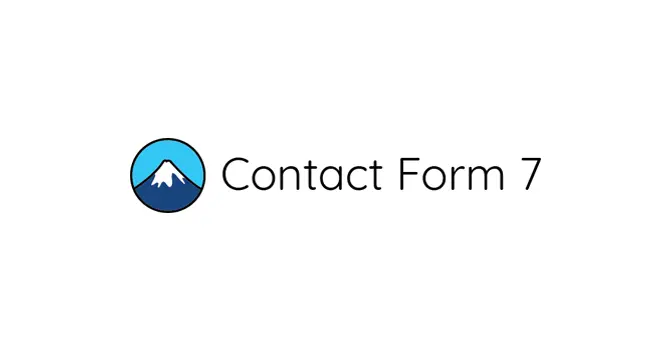
Contact Form 7 is a lightweight and highly reliable contact form WordPress plugin designed to simplify form creation. Instead of relying on heavy drag-and-drop builders, it offers a clean and code-friendly approach. Moreover, it allows website owners to manage multiple forms at once, ensuring flexibility and control. Because it integrates smoothly with most WordPress themes, it remains a favorite among both beginners and developers.
In addition, its spam protection features help keep unwanted messages away, making communication secure and efficient.
Table of Contents
Contact Form WordPress Plugin
In simple terms, Contact Form 7 is a free contact form WordPress plugin that lets you build and manage forms for your website. Furthermore, it supports key functions like email notifications and spam filtering. As a result, you can receive messages from visitors securely and efficiently. With its open-source nature, developers can extend its functionality using hooks and additional add-ons.
Who Should Use Contact Form 7?
This plugin is perfect for site owners who value simplicity and speed over heavy drag-and-drop builders. In addition, developers who enjoy working with custom code will find its markup system appealing. For users focused on creating basic yet reliable contact forms without unnecessary bloat, Contact Form 7 is a great choice.
Key Features of Contact Form WordPress Plugin
Contact Form 7 stands out as a simple yet highly effective solution for managing contact forms on WordPress websites. Rather than overwhelming users with a bulky interface, it keeps everything lightweight and easy to use. Furthermore, it provides full flexibility by allowing unlimited form creation, which is perfect for websites that need multiple forms for different purposes. Because of its compatibility with most themes and plugins, it integrates smoothly into almost any WordPress setup.
Here are the key features of Contact Form 7, sorted by importance:
- Simple & Lightweight Contact Form Solution – Delivers a minimal yet powerful form builder that won’t slow down your site.
- Unlimited Form Creation – Build as many forms as you need for different pages, campaigns, or purposes.
- Customizable Form Fields (Text, Email, Dropdowns, Checkboxes) – Personalize every form with flexible input fields to match your requirements.
- Spam Protection with reCAPTCHA & Akismet – Keep unwanted submissions out while ensuring genuine messages get through.
- Email Notifications & Autoresponders – Instantly receive user messages and optionally send automated replies to visitors.
- AJAX-Powered Submissions – Provide users with a smooth experience by submitting forms without reloading the page.
- File Upload Support – Allow users to attach documents, images, or other files securely.
- Developer-Friendly with Hooks & Filters – Extend functionality easily with custom code for more complex use cases.
- Compatibility with Most Themes & Plugins – Ensures smooth integration with nearly any WordPress setup.
- Multilingual & Translation-Ready – Reach a global audience by using it with translation plugins like WPML or Polylang.
Benefits of Contact Form WordPress Plugin
Contact Form 7 offers several advantages that make it one of the most trusted contact form plugins for WordPress. Instead of being bloated with unnecessary features, it remains a completely free and open-source solution, which makes it accessible to everyone. Furthermore, its flexibility and high level of customization allow users to create forms tailored to their exact needs. Because it is lightweight and optimized for performance, it has minimal impact on site speed — an essential factor for SEO. In addition, it works seamlessly with popular plugins, enabling smooth integration with tools like Akismet for spam control, WPML for translations, and even WooCommerce for basic form use cases.
Here are the benefits of Contact Form 7, sorted by importance:
- Completely Free & Open-Source – No cost, no license restrictions, and fully community-supported.
- Flexible and Highly Customizable – Adjust fields, messages, and functionality to suit different requirements.
- Lightweight and Minimal Impact on Performance – Keeps your website fast, which helps improve user experience and rankings.
- Works Seamlessly with Popular Plugins – Compatible with Akismet, reCAPTCHA, translation plugins, and more.
Limitations of Contact Form 7
Despite its strengths, Contact Form 7 does have a few drawbacks to consider. Unlike drag-and-drop builders such as WPForms, it does not include a built-in visual form builder, which may make it less beginner-friendly. Moreover, styling is basic and often requires custom CSS, so users who want pixel-perfect designs may need additional effort. Finally, it lacks built-in advanced features like payment integration or conditional logic, which might require installing extra add-ons or switching to a premium plugin.
Here are the limitations of Contact Form 7, sorted by importance:
- No Built-In Drag-and-Drop Builder – Form creation relies on shortcodes and basic markup.
- Basic Styling Requires Custom CSS – Design customization may need manual coding for a polished look.
- Lacks Built-In Advanced Features (like Payment Integration) – Requires third-party add-ons or alternatives for complex functionality.
Use Cases of Contact Form 7
Contact Form 7 is versatile and fits a wide range of website needs. Rather than limiting you to a single purpose, it supports several practical applications that enhance user interaction.
- Simple Contact Pages – Perfect for basic “Contact Us” pages where visitors can easily reach out.
- Customer Inquiry Forms – Collect product or service questions directly from potential customers.
- Newsletter Signup Forms – Capture leads and grow your email list by integrating with email marketing tools.
Because it is lightweight, these forms load quickly, which improves user experience and helps reduce bounce rates. Furthermore, its spam protection features ensure that messages are legitimate and valuable.
Getting Started with Contact Form 7

Starting with Contact Form 7 is straightforward and does not require advanced technical knowledge. In fact, you can have a functional form running in just a few steps.
- Installation & Setup Guide
First, go to your WordPress dashboard and navigate to Plugins → Add New. Then, search for “Contact Form 7” and click Install Now, followed by Activate. - Creating Your First Form
Once activated, head to the Contact → Contact Forms menu. There, click Add New to generate a default form template. You can customize fields such as text, email, dropdowns, and checkboxes according to your needs. - Adding a Contact Form to Pages & Posts
After saving the form, copy the shortcode provided. Next, paste it into any page, post, or widget area where you want the form to appear. Finally, publish the page and test your form to ensure everything is working correctly.
By following these steps, you can quickly set up a contact form that matches your site’s style and goals. Moreover, as your needs grow, you can extend functionality with add-ons or custom CSS.
Integrations & Add-ons for Contact Form 7
Contact Form 7 becomes even more powerful when paired with the right integrations and add-ons. Rather than limiting users to basic forms, it allows advanced functionality through third-party plugins. Furthermore, its open-source nature makes it easy for developers to extend its features.
Here are the Popular Extensions for Contact Form 7, sorted by importance:
- CRM & Email Marketing Integrations – Connect forms with tools like Mailchimp, HubSpot, or ActiveCampaign to automate lead management.
- Payment Gateway Add-ons – Accept payments through PayPal or Stripe directly from your forms for bookings or donations.
- Additional Field Plugins – Add advanced field types such as date pickers, multi-step forms, and file uploads.
Because of these integrations, you can turn a simple contact form into a powerful conversion tool. In addition, they allow businesses to streamline workflows and reduce manual work.
Best Practices for Contact Form 7
To get the most out of Contact Form 7, following best practices is crucial. Instead of just placing a default form on your site, focus on design, security, and performance.
Here are the Best Practices for Contact Form 7, sorted by importance:
- Improving Form Design & User Experience – Keep forms short, visually clean, and easy to complete. Use clear labels and proper spacing to guide users.
- Adding Validation & Security – Enable reCAPTCHA and set up required fields to reduce spam and incorrect submissions.
- Optimizing for Performance – Minimize unnecessary scripts and keep the plugin updated to ensure fast loading times.
By applying these best practices, you improve engagement and boost the chances of users completing your forms. Moreover, you reduce friction and maintain site performance.
Conclusion
Contact Form 7 remains one of the most reliable and lightweight form solutions for WordPress. Instead of overwhelming users with complex interfaces, it focuses on simplicity and flexibility. Furthermore, it integrates well with popular plugins, making it highly adaptable for different needs. Although it lacks a drag-and-drop builder, its extensibility through add-ons makes it a capable tool for businesses, bloggers, and developers alike.


